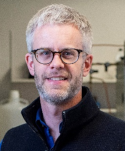X-factors that Might Determine How Perovskite Solar Cells are Deployed
Metal halide perovskite solar cells might be deployed as single junctions or in tandems that could consist of wide bandgap perovskites paired with silicon, copper indium gallium dye selenide or a narrow-bandgap perovskite. Modules might be made with singulated cells that are connected by wires or ribbons or in a monolithically integrated architecture made with several laser scribes. Researchers often discuss the efficiency, stability under standard operating conditions and cost of the various options when making the case that one approach is the most attractive. These factors are indisputably important, but there are other factors that do not get as much attention, but could end up determining which approach is the best one. We will discuss reverse bias degradation that can occur when a panel is partially shaded and comment on which architectures are likely to be the most resistant to this type of degradation. We will discuss why some architectures are likely to have higher yield than others and point out that laser scribing along with metal vias could introduce degradation mechanisms that are not seen in the cells that are frequently put through accelerated lifetime testing.
Date and Time
Location
Hosts
Registration
-
 Add Event to Calendar
Add Event to Calendar
Loading virtual attendance info...
Speakers
 Prof.Michael McGehee of University of Colorado, Boulder, CO
Prof.Michael McGehee of University of Colorado, Boulder, CO
X-factors that Might Determine How Perovskite Solar Cells are Deployed
Metal halide perovskite solar cells might be deployed as single junctions or in tandems that could consist of wide bandgap perovskites paired with silicon, copper indium gallium dye selenide or a narrow-bandgap perovskite. Modules might be made with singulated cells that are connected by wires or ribbons or in a monolithically integrated architecture made with several laser scribes. Researchers often discuss the efficiency, stability under standard operating conditions and cost of the various options when making the case that one approach is the most attractive. These factors are indisputably important, but there are other factors that do not get as much attention, but could end up determining which approach is the best one. We will discuss reverse bias degradation that can occur when a panel is partially shaded and comment on which architectures are likely to be the most resistant to this type of degradation. We will discuss why some architectures are likely to have higher yield than others and point out that laser scribing along with metal vias could introduce degradation mechanisms that are not seen in the cells that are frequently put through accelerated lifetime testing.
Biography:
Mike McGehee is a Professor in the Chemical and Biological Engineering Department at the University of Colorado Boulder. He is the Associate Director of the Materials Science and Engineering Program and has a joint appointment at the National Renewable Energy Lab. He is a cofounder and the Chief Scientist of Tynt Technologies, a company that is commercializing dynamic windows based on reversible metal electrodeposition. He is an advisor to Swift Solar, which was cofounded by former members of his research group. He was a professor in the Materials Science and Engineering Department at Stanford University for 18 years and a Senior Fellow of the Precourt Institute for Energy. His group makes materials and devices, performs a wide variety of characterization techniques, models devices and assesses long-term stability. He received his undergraduate degree in physics from Princeton University and his PhD degree in Materials Science from the University of California at Santa Barbara.
Email:
Address:University of Colorado, 400 Discovery Drive, , Boulder, CO, United States, 80303

